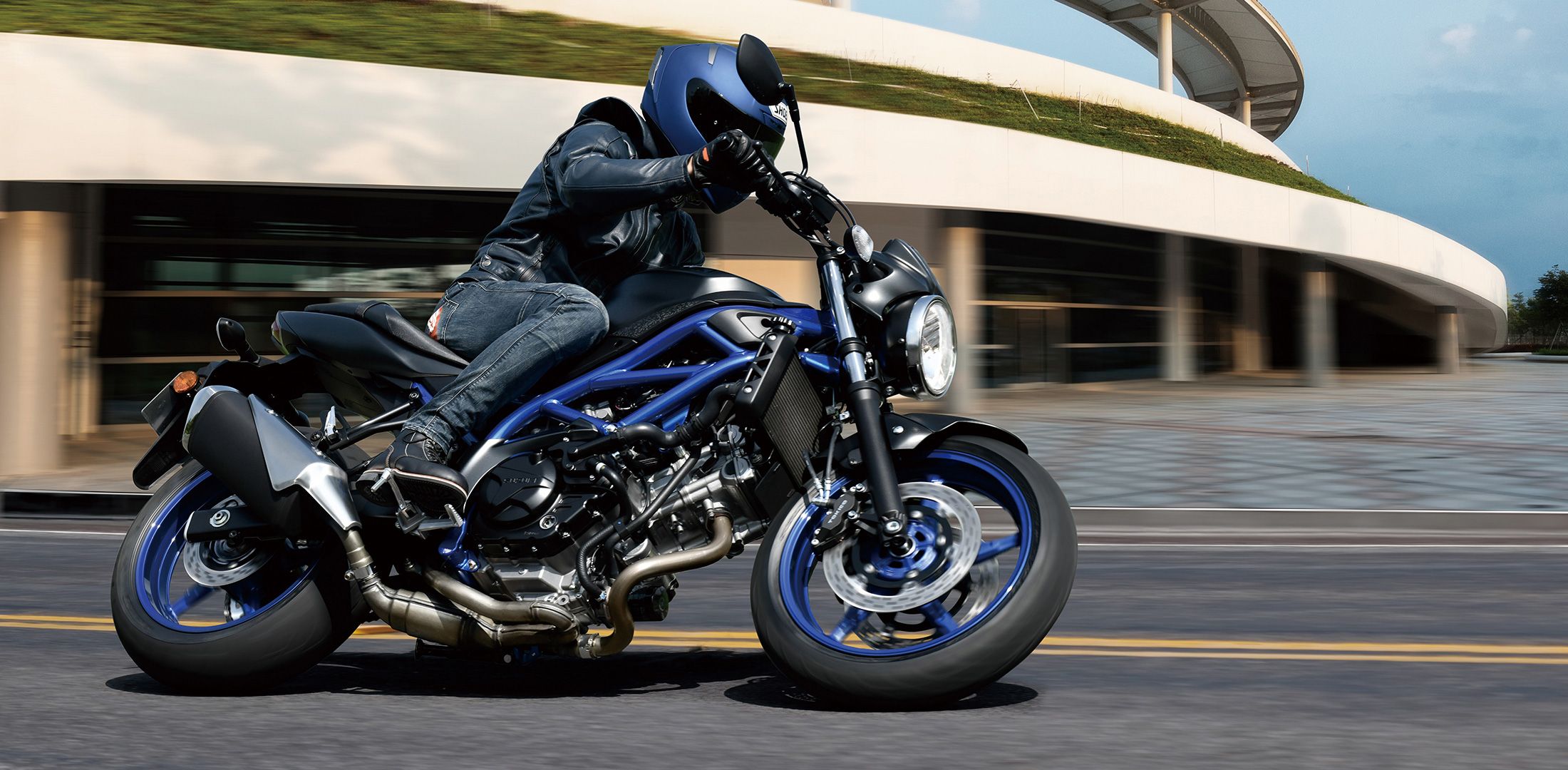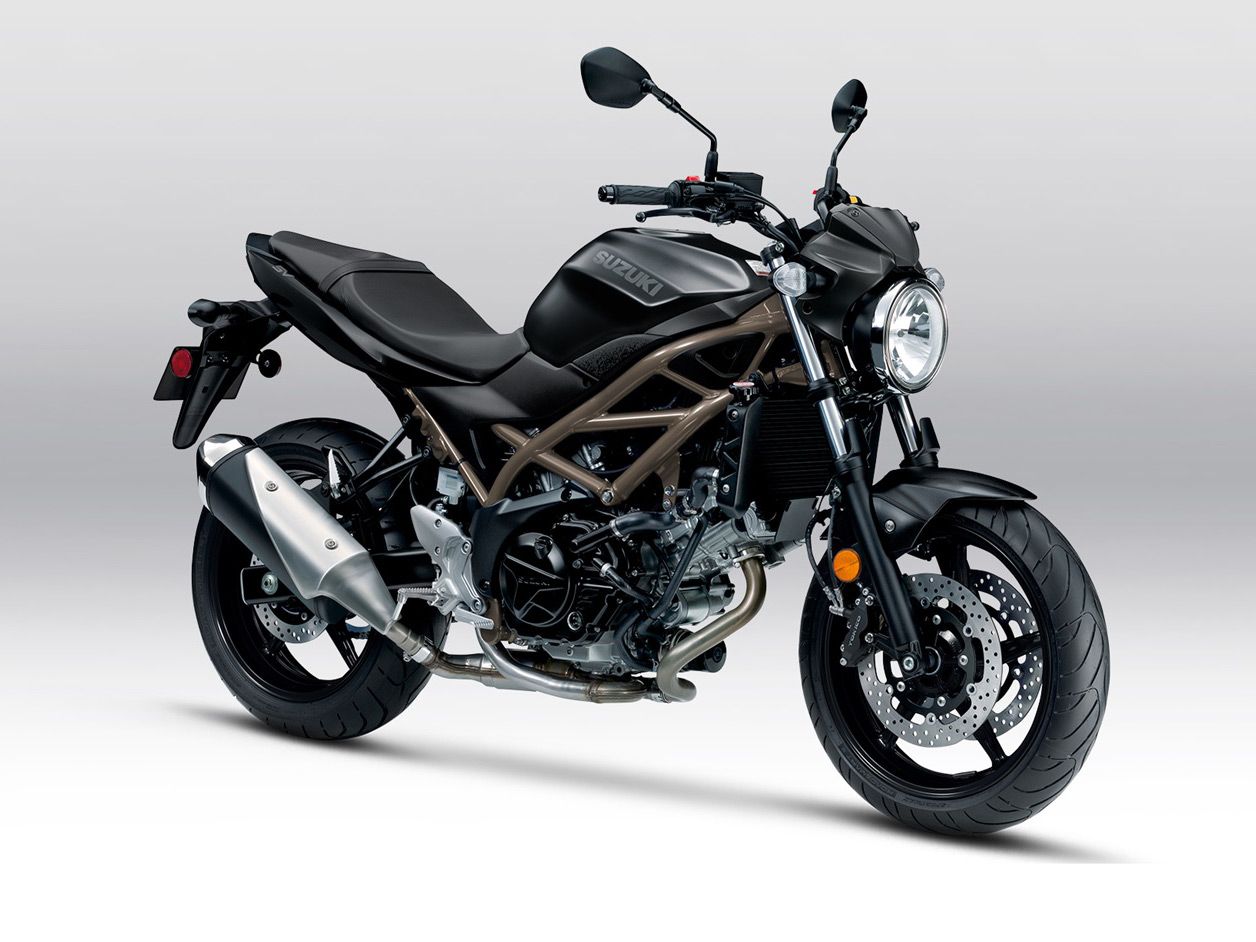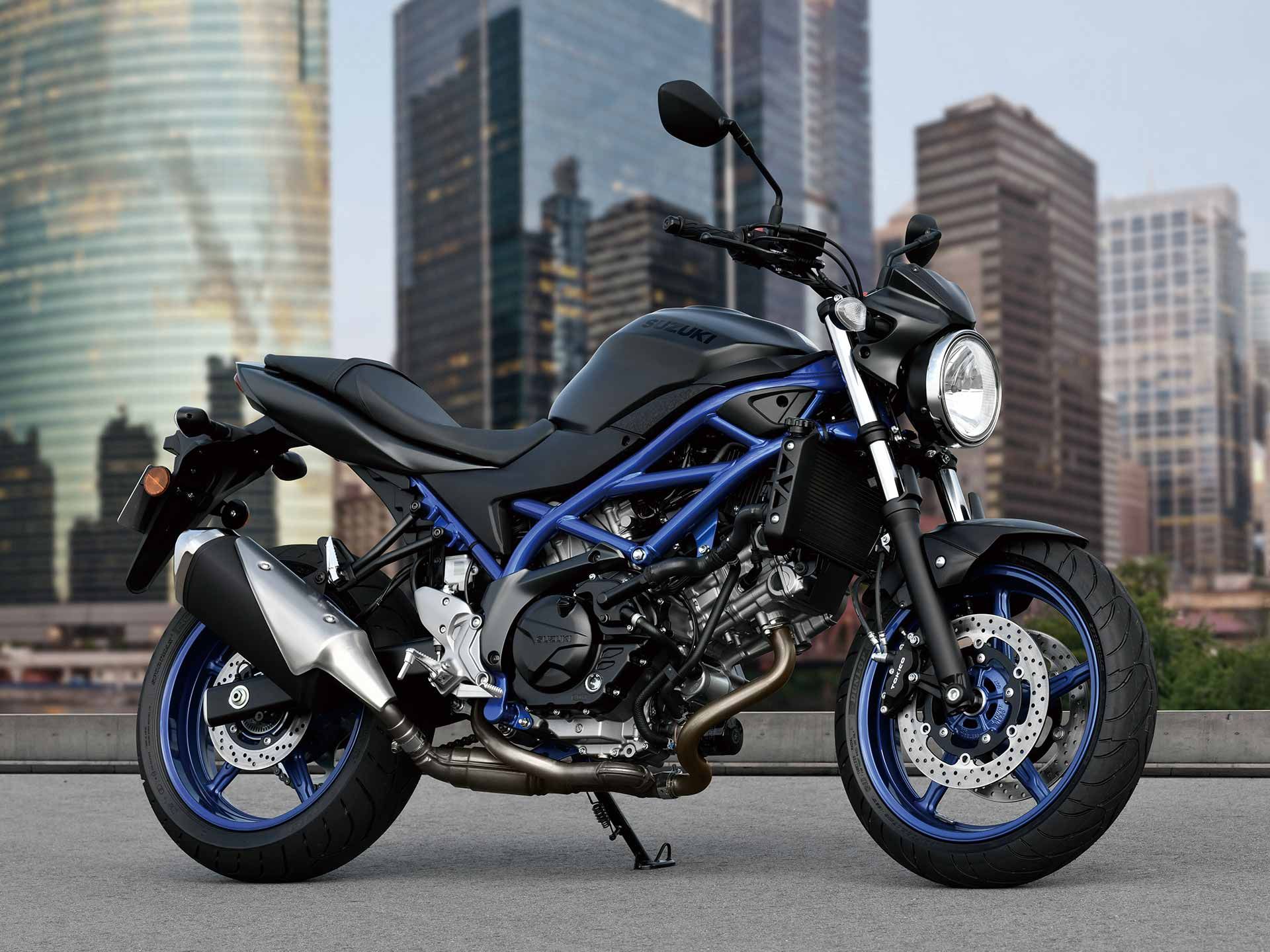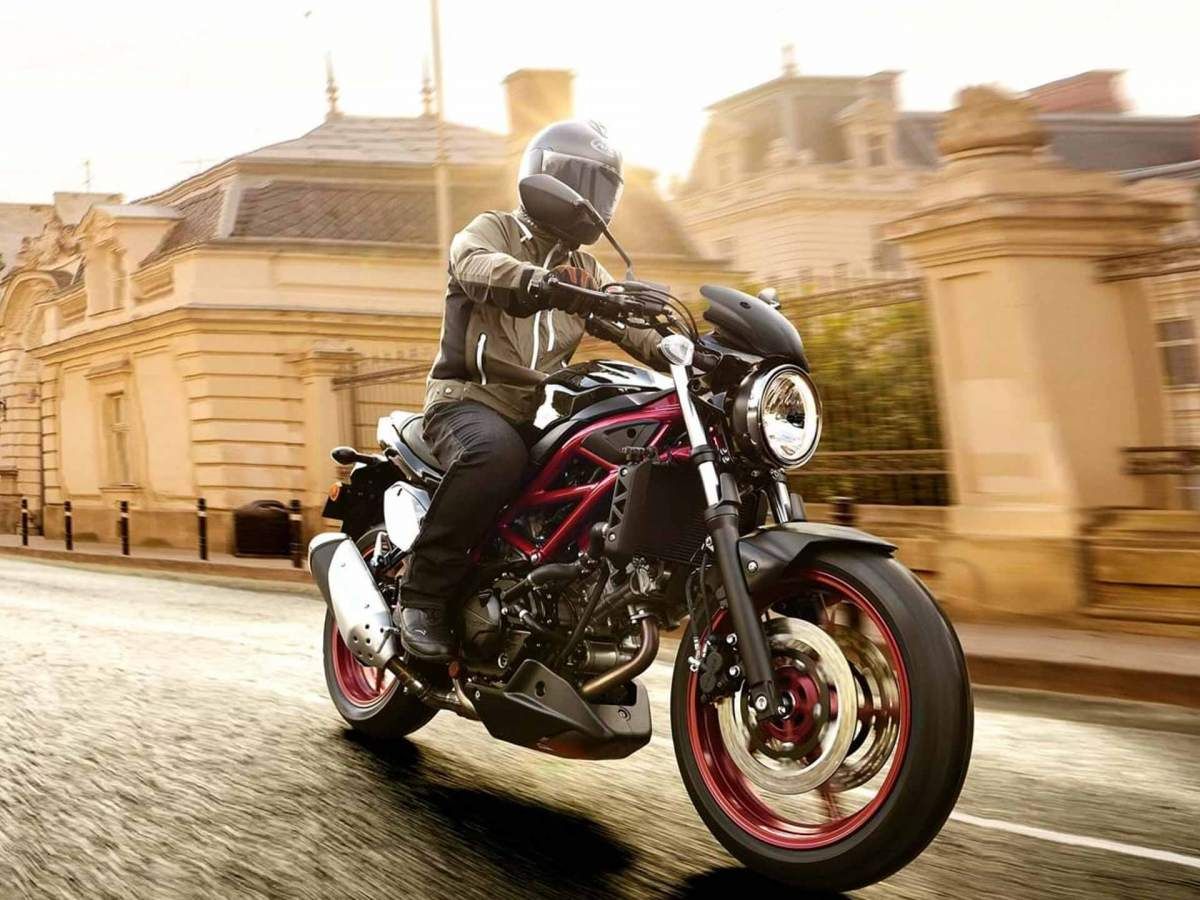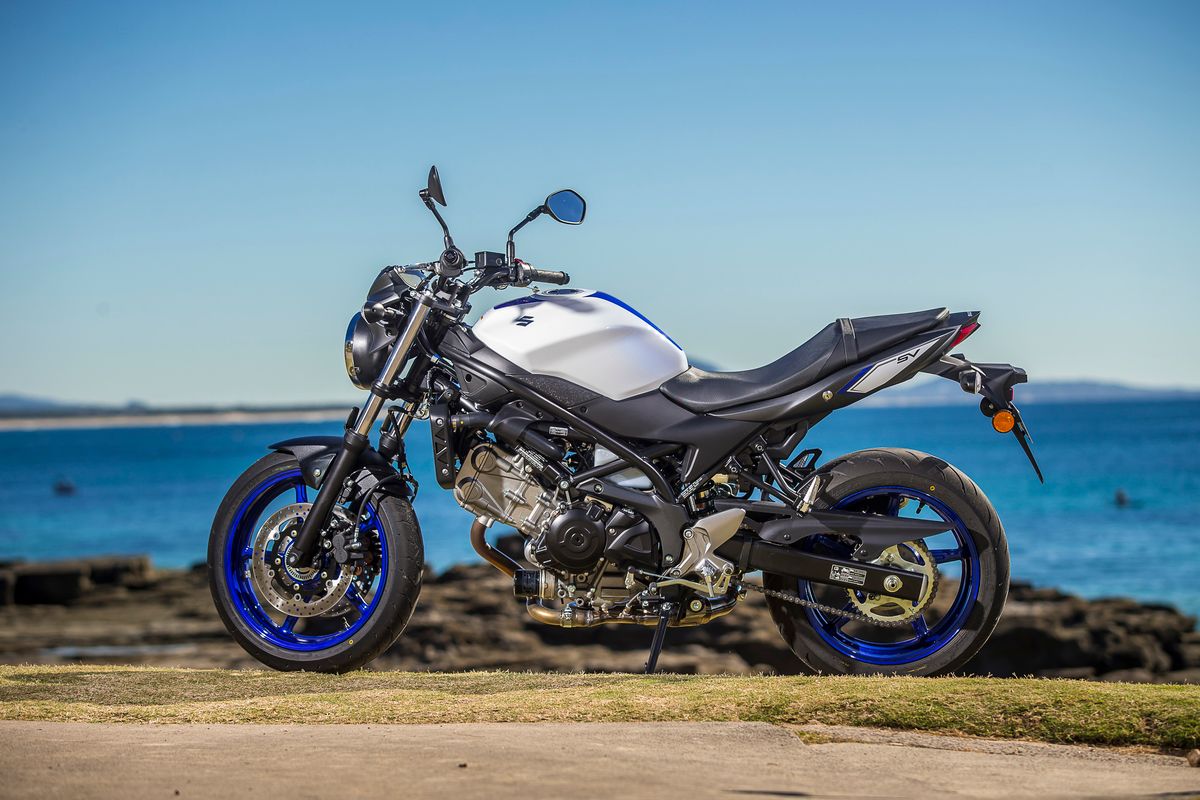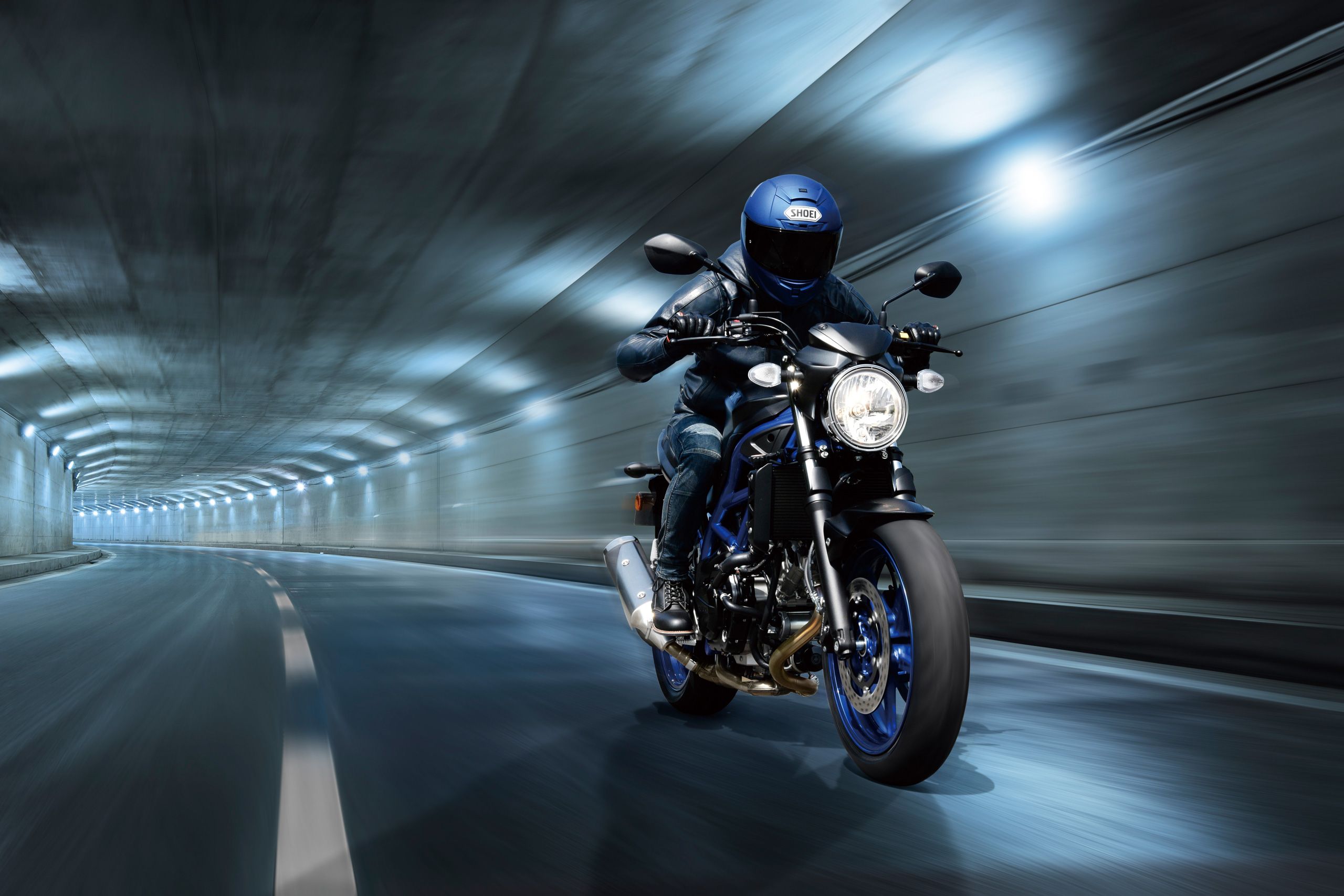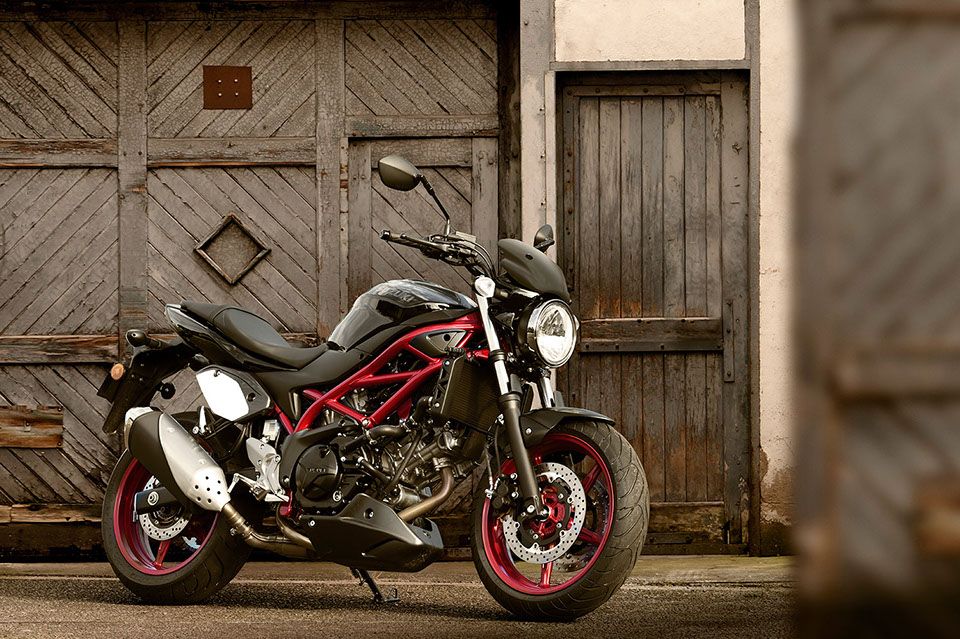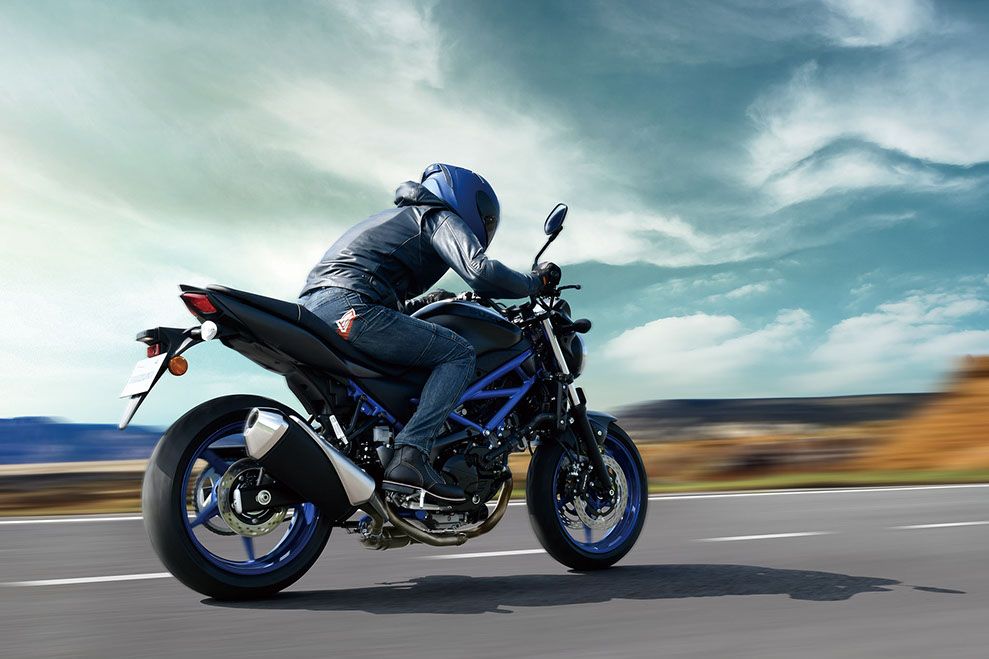Recent spy shots have suggested that Suzuki is about to drop the aging but bulletproof V-twin engine as found in the V650 and the V-Strom DL650 for a much more modern parallel twin design, following the lead of Yamaha, BMW, and KTM. For Suzuki diehards, this will be sad news as the SV650’s engine was something pretty unique in the world of lightweight roadster motorcycles. Suzuki has said nothing about when the V-twin engine will be phased out so let’s enjoy it while we still can and celebrate this iconic engine and the brilliance of the SV650.
A Legend is Born
Suzuki introduced the V-twin-engined SV650 in 1999, going head-to-head with models such as the Kawasaki Ninja 500R, Honda NT650, and even Suzuki’s own GS500. The GS500 and Ninja 500R were both parallel twins and the Honda had a narrow-angle V-twin. At the time, the market for ‘naked’ bikes, i.e. bikes with no fairing, was growing both in Europe and America, although customers still wanted a fairing of some sorts, so two models of SV650 were offered: the naked SV650 and the faired SV650S. The combination of lightweight, rigid chassis, strong and predictable handling, and a torquey V-twin engine produced a motorcycle that was attractive not only to beginner riders, but also to those with lots of experience. The SV650 was at once easy to ride and relatively cheap to buy, making it a hit for Suzuki.
The Battle Still Rages
If the market was fairly crowded when the SV650 was introduced, then that’s nothing to the opposition it faces today. BMW offers the F850 range, Yamaha the MT-07 range, KTM the 790 and 890 ranges, Kawasaki the Z650, Triumph the Trident 660, Aprilia the Tuono 660, Honda the CBR500, CBR650, and NC750, and the list goes on. However, the Suzuki is still the only motorcycle in this class with a V-twin which is, for many, the clincher. Overall, the Suzuki SV650 is a simple bike with minimal electronics, a simple chassis, and relatively low-spec suspension and braking components. But, it is also chock-full of character, has great mid-range torque, and a sweet handling chassis. It also has genuine V-twin torque and soundtrack, although those are being copied effectively by the parallel-twin engined hordes which, with their 270° crankpins, resemble a V-twin’s characteristics. One drawback of the SV650’s engine is the 90° angle between the cylinders. This makes it a very long engine which compromises packaging and explains why an uneven-firing parallel twin is now seen as a better engine in terms of packaging while losing nothing much to the V-twin in terms of character or torque.
The Engine That Just Won’t Die
It has been said that, after the nuclear holocaust, cockroaches will be riding around on Suzuki SV650s as they will be the only two things to survive! Certainly, the SV650’s V-twin engine is virtually bullet-proof. This has a lot to do with the relatively mild state of tune which will never over-stress the engine but it also has a lot to do with Suzuki engineering which might seem a little dull and boring on the surface but which also means that the company builds engines that just last and last. A 90° V-twin has perfect primary balance so needs no counterbalancing shaft to add weight, complication, and wear and tear. There are various forums online for SV650 owners who claim that a well-maintained SV650 V-twin engine will easily last over 100,000 miles before it needs any major mechanical attention. And, these aren’t engines that have never seen the red line on the rev counter: the SV650 engine begs to be ridden hard, and it will take virtually any punishment that the rider can dole out. Because it is so popular, Suzuki regularly upgrades it to both improve and deal with any potential problem areas.
So, Why Is Suzuki Dropping The V-twin?
There are many advantages to a parallel twin over a V-twin. The primary benefits are packaging and simplicity. A parallel twin engine is more compact and has fewer components - one set of barrels, one cylinder head, and better cooling, all of which add up to easier manufacturing, not to mention easier adherence to ever-stricter emissions regulations. Because it is smaller physically, a parallel twin makes it easier to dial in better chassis dynamics. One disadvantage of a parallel twin is the need for the added complexity of a balancer shaft, but this disadvantage is balanced out by the other benefits.
Simplicity Is The Key To The SV650
The Suzuki SV650 is a simple motorcycle, which only adds to its appeal. The suspension is perfectly dialed in by the factory and there is no adjustment, other than the rear shock absorber preload. The brake calipers are by Tokico and clamp twin discs at the front and a single disc at the back. ABS is present, but there are no other rider aids - no traction control or ride-by-wire throttle offering different riding modes, for example. The dash is a simple LCD affair that offers all the relevant information clearly, if the display is a little due by comparison to the latest full-color TFT dashes on rival bikes. Expect the replacement for the SV650 to be much better equipped in this respect. Two useful features are Suzuki’s Easy Start system which requires a short press of the starter button: the engine will then crank over on its own until it fires. Also, the Suzuki Low-RPM Assist, an anti-stall feature, is pretty useful.
Weight and Handling
The Suzuki SV650 weighs in at 437 pounds (with ABS) which is within ten or twenty pounds of the opposition. On the road, it is exceptionally stable while still being nimble enough in the corners. It’s not as quick-steering as a dedicated sports bike, but that is part of its charm: its more mellow and easier to reach its limits which are still pretty high: high enough to keep experienced riders happy while being docile enough to make beginner riders feel comfortable and that the bike is working with - and not against - them.
Ergonomics
The SV650 is a naked sporty (as opposed to sports) bike so the ergonomics are relaxed and comfortable. Wide handlebars give good leverage when changing direction and where the seat meets the tank is narrow which, along with the relatively low seat height of 30.9 inches, means it is perfect for shorter riders and beginners, for whom being able to touch the ground easily increases confidence.
Age is a Benefit
Existing for so long in a largely unchanged form is definitely a benefit as Suzuki has been able to indulge in a program of steady development that has eliminated any of the few problems that have arisen through everyday use by owners. The initial design was so good, however, that few fixes have been necessary. All this adds up to a motorcycle that is as reliable and bulletproof as it is possible to be, while the riding experience has undergone similar mild tweaks to make it one of the most fun motorcycles you can buy, suitable for any purpose you choose to put it to.
Power and Torque
75 horsepower and 47.2 pound-feet of torque might not sound like much but every single pony and every foot pound of torque is so easily accessible that it feels as if there is a lot more on offer. Whether on the open road, sitting on the highway or carving through the canyons, or bumbling through the city streets, the V-twin engine of the SV650 feels like it has many personalities but none of them are malicious. Instead, you get perfect throttle response at any revs and a creamy surge of power no matter what speed you are doing and what gear you are in. Carrying a pillion doesn’t upset the engine’s equilibrium at all, and you can have just as much fun two-up as riding solo.
Prices and Models
The Suzuki SV650 starts at $7,299 for the non-ABS model. With ABS, it costs $7,749. Then there is the café racer-styled SV650X, which retails for $8,400. If you want the V-twin engine but not in a naked roadster, you can also opt for the V-Strom DL650 adventure bike, which retails for $8,904 and might just be one of the best adventure bikes out there, sharing the SV650's rugged engine and being commendably simple, with very little to go wrong but possessing great off-road ability.
FAQ
Q: Is. the SV650 a good beginner bike?
Yes, the Suzuki SV650 is a great beginner bike due to its light weight, low seat height and unintimidating performance.
Q: How much horsepower does an SV650 have?
The Suzuki SV650's V-twin engine produces 75 horsepower and 47.2 pound-feet of torque
Q: How reliable is an SV650?
The Suzuki SV650 is one of the most reliable motorcycles you can buy, with many owners reporting up to 100,000 miles without any trouble, as long as it is serviced regularly.

